“Scratch any dancer and you will find Denishawn”—a phrase common among post-World War II critics—sums up the monumental impact of Ruth St. Denis and Ted Shawn. Through their tenacity and conviction, their eccentricities and vision, they laid the foundation for what was to become modern dance.
Born in Newark, New Jersey in 1874, Ruth St. Denis was a poor farmgirl with a flair for the dramatic. In 1904 when she passed by an advertisement in a drugstore window in Buffalo, her “destiny as a dancer… sprung alive”: the goddess Isis, bare-breasted and brooding, filled a large poster for Egyptian Deities Cigarettes. One year later, St. Denis performed Radha: The Mystic Dance of the Five Senses, a work about sensuality and renunciation modeled on a character from Edwin Arnold’s The Light of Asia. The final tableau featured St. Denis seated in lotus position and lost in samadhi.
Denis’ interest in things Eastern led to The Yogi (based on the Bhagavad-Gita), Incense, and A Shiraboyoshi (from a story by Lafcadio Hearn). In 1914, Miss Ruth, as she was called, performed O Mika, a dance about Kuan-yin, the Buddhist goddess of mercy. That same year she met Ted Shawn who, at age twenty-three, was twelve years her junior. He joined her on tour and they married a year later.
Their approaches to choreography differed. St. Denis drew on both traditional aesthetics and religion, embracing art as a mode of transcendence. Shawn immersed himself in the technical aspects of ethnic dance, learning the precise movements from various traditions.
Shortly after they were married, they opened Denishawn, the dance school in Los Angeles where they taught showgirls, including Lillian Gish and Louise Brooks. It was there that St. Denis performed a dance about the life of the historical Buddha.
In 1926 the company booked a tour of the East. Indian audiences took to the performances immediately—especially to St. Denis’ nautch (a traditional Indian dance for a female dancer). Leaving his wife to rest in Calcutta, Shawn made his way to Darjeeling to become the first American to witness the traditional Black Hat dances of Tibetan monks. The dances were made famous as the vehicle of triumph over the evil King Lang Darma (who attempted to wipe Buddhism out of Tibet in the ninth century), when a dancer hid his weapon under his hat and managed to assasinate the evil king. The performances, Shawn wrote, were “technically more interesting and more difficult than anyone has led me to believe … bigness, power, and dignity of idea were conveyed sometimes by a slow and controlled motion. These dancers were trying to express the idea of a supernatural being possessed of more than ordinary human powers, and they used a most legitimate technical means to produce that effect.”
When they returned to the States, Shawn began to come into his own as a dancer—just as St. Denis’ career began to wane. The professional and personal partnership dissolved and Shawn went on to form the Ted Shawn Dancers and to found the renowned Jacob’s Pillow festival. The Denishawn marriage was never a conventional one, and they decided not to divorce, choosing instead to perpetuate, in Shawn’s words, “a rare marriage which has survived the passing of the physical tie and has emerged as a greater thing than it ever was on that plane.”
Ellen Pearlman, a writer and photographer, is currently at work on Dancing on the Edge of Destiny, a book about Tibetan dance.
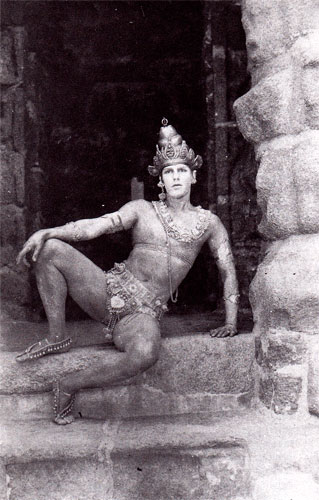
Three hours south of Madras, Ted Shawn posed as Shiva. The tropical sun beat down on his silver costume and he drenched himself with water between shots to avoid heat prostration.
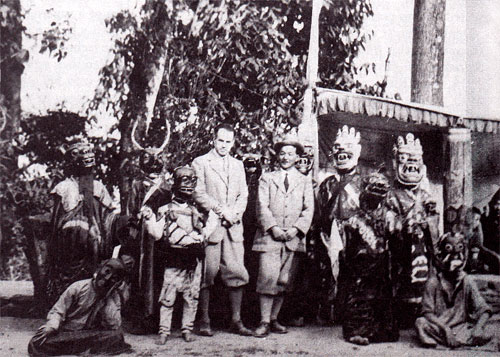
Always in good graces with important officials, Shawn managed to wire General Laden La, a powerful Tibetan magistrate and obtain permission to witness the Black Hat dance. The General is pictured with Shawn and the Black Hat dancers.
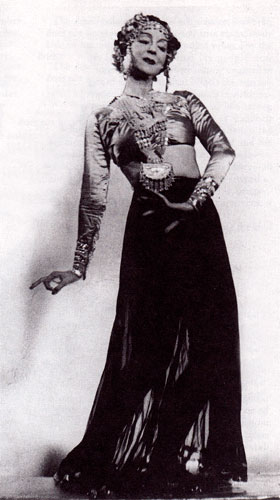
Ruth St. Denis dressed for her Indian nautch dance.
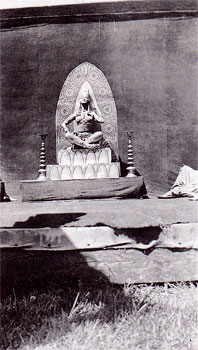
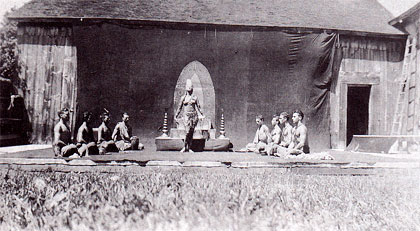
Ruth St. Denis at Jacob’s Pillow, circa 1940.
Thank you for subscribing to Tricycle! As a nonprofit, we depend on readers like you to keep Buddhist teachings and practices widely available.